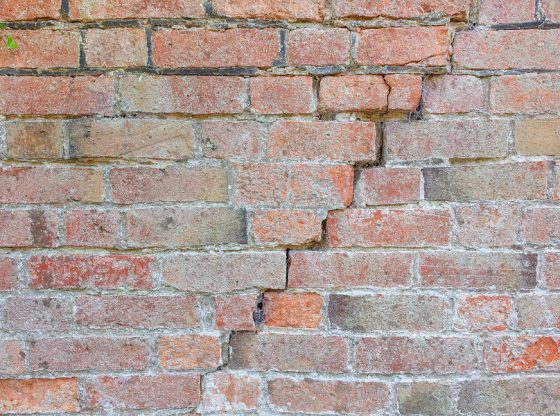Subsidence vs. Settlement
The sight of a crack in a wall is enough to make the calmest of us panic. Sometimes there’s no reason to be alarmed and something as simple as the changing seasonal temperatures and conditions can be responsible for temporary hairline cracks that pose little to no danger of having a major impact in the long run.
Unfortunately this doesn’t always happen to be the case and cracks can be an indication of subsidence. Cracks in walls can be a matter of subsidence or settlement and knowing the difference can put your mind at ease.
What Is the Difference between Subsidence and Settlement?
Settlement occurs when buildings are still new. It occurs as the newly built building moves soil due to its weight and load as the ground has to adjust in order to support the structure. It could also be down to the materials used as they settle and shrink.
Some people describe settlement as buying a sofa that was been broken in and movement should eventually stop. Settlement is essentially your building making itself comfortable, or settling, on its new sofa.
Subsidence on the other hand is a whole different scenario. Subsidence is the downward movement of a building sinking into the ground. There is usually a loss of support from the structure’s foundations and can happen over time without occupants noticing until finding a crack.
Subsidence can be compared to buying a new sofa and a leg falling off. Part of the building is uneven or moving away and needs amending as soon as possible. If left untreated, the problem will only get worse over time.
How Can You Tell the Difference between Subsidence and Settlement?
Probably the biggest sign of the root of a crack is the size and appearance. It is generally accepted that thin, hairline cracks that come and go with the seasons, due to expanding and contracting materials, elevated air moisture and new temperatures, are unimportant structurally. Most cracks are of this nature and are harmless to your building.
Subsidence cracks though are instantly recognisable. Usually diagonal, they tend to be much thicker and wider than hairline cracks. Even thin starting cracks that gradually get bigger can be a sign. Anything over 16mm is classed as being severe and should be investigated without delay.
You may also find that your floors seem unbalanced, doors and windows don’t open or close as they should and drains don’t work properly.
If you suspect your building is affected by subsidence, you should immediately get in touch with a structural engineer. They’ll need to come out and confirm if cracks are a result of subsidence and advise you on the best course of action.
Is There a Fix for Subsidence and Settlement?
Subsidence and settlement problems should be handled as soon as spotted. The process involves repairing the building’s foundations in an effort to restore them back to their original state.
Traditional underpinning methods requires excavation in order to get to foundations. This method could take a while as ground is dug up, foundations are adjusted and excavations are refilled.
Alternatively, GEOBEAR’s geopolymer technology can be used. Specialised resins are injected into the foundations and in no time at all, the weight of the structure can once again be supported, comfortably and easily. It is also much cleaner as it is eco-neutral and requires no digging.
There’s also no need to declare works carried out by GEOBEAR on the property deeds making reselling and insurance easier in the future.
With over three decades experience of providing effective subsidence and settlement solutions, GEOBEAR is the perfect solution to all sinking structures, building settlements and subsidence issues.

